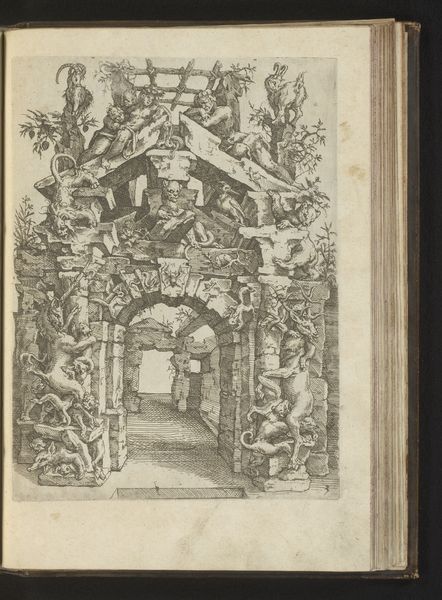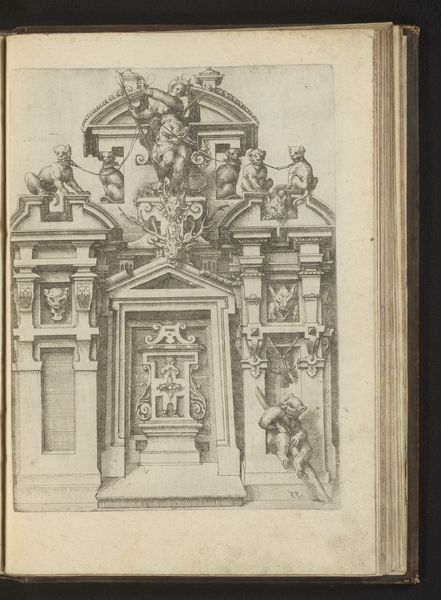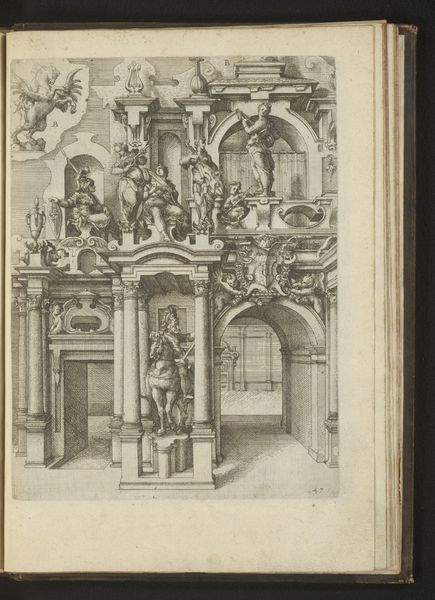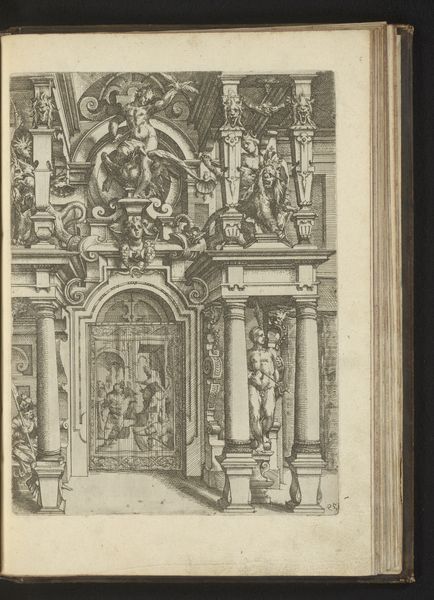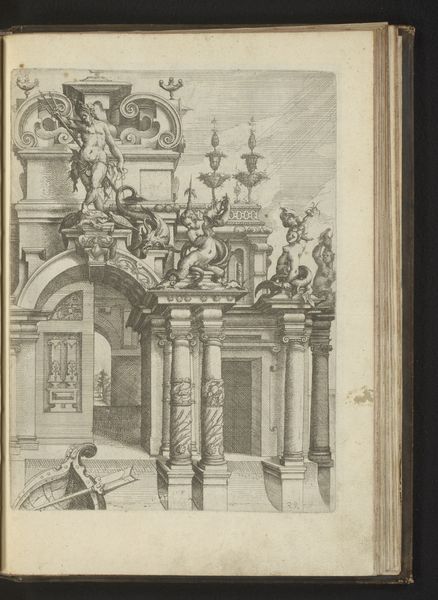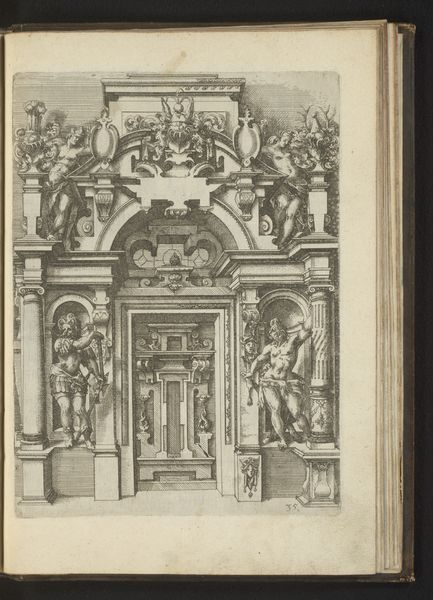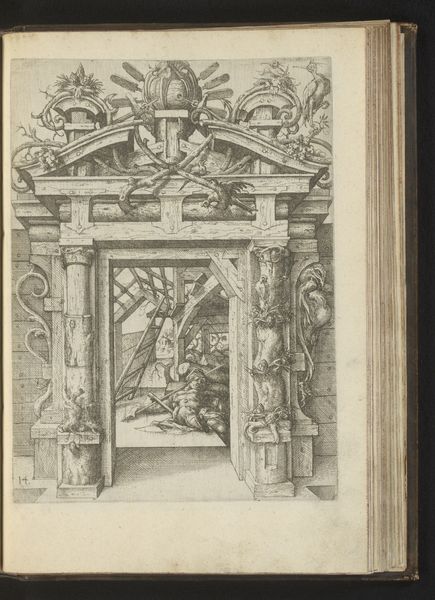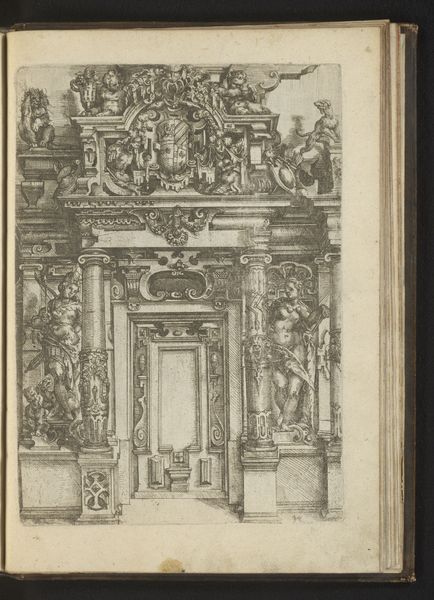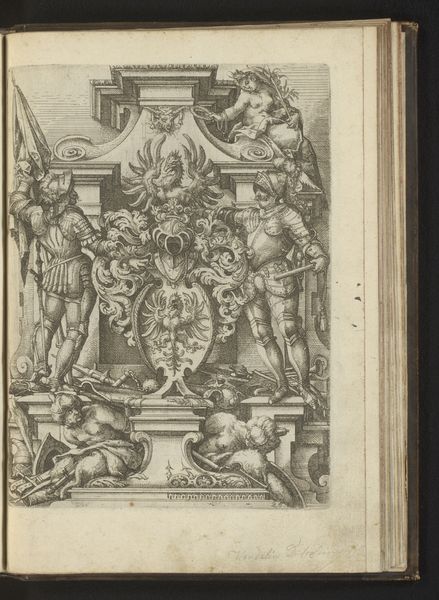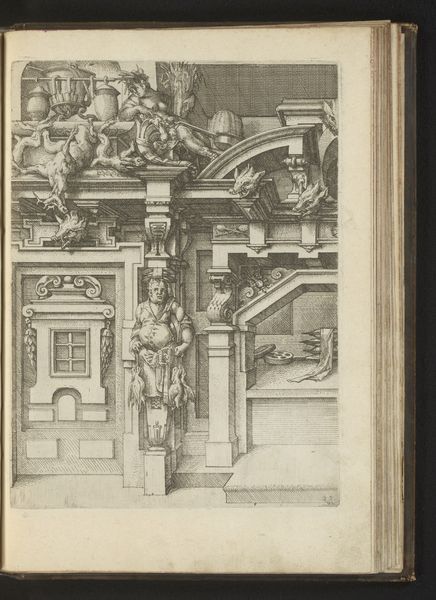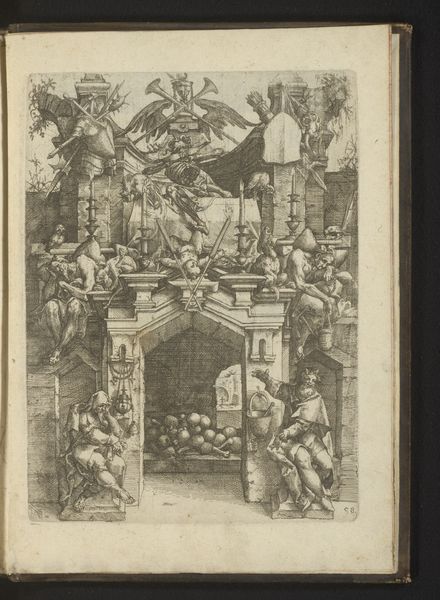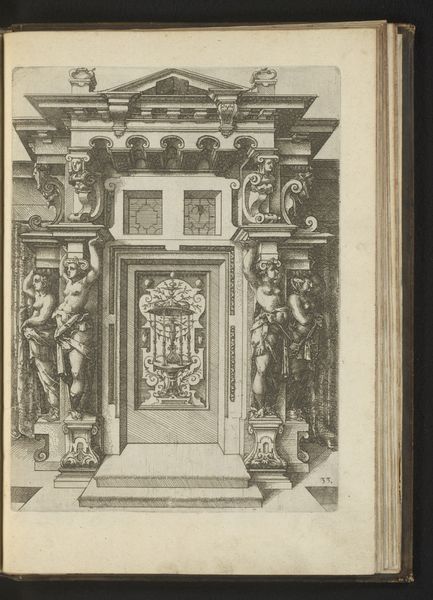
Tuinpoort gedecoreerd met vrouwelijke hermen, guirlandes, standbeelden en dieren 1593 - 1595
0:00
0:00
drawing, print, etching, engraving, architecture
#
drawing
#
baroque
# print
#
etching
#
landscape
#
figuration
#
engraving
#
architecture
Dimensions: height 246 mm, width 186 mm
Copyright: Rijks Museum: Open Domain
Editor: This etching by Wendel Dietterlin, made sometime between 1593 and 1595, is called "Tuinpoort gedecoreerd met vrouwelijke hermen, guirlandes, standbeelden en dieren"—or, "Garden Gate Decorated with Female Herms, Garlands, Statues, and Animals." It's so ornate, almost overwhelmingly so. What strikes you when you look at this image? Curator: What immediately jumps out is the overt display of power and control. Dietterlin, working in a period of significant social stratification, uses architectural fantasy to visualize those power dynamics. We see female figures reduced to decorative, structural elements – the herms you mentioned – literally supporting the weight of this idealized, almost propagandistic space. How do we read the presence—or perhaps, the *imposed* presence—of women in this context? Editor: That's a fascinating point. So, these female figures, integrated into the architecture itself, are symbols of... subjugation? Their strength is being co-opted, rather than celebrated? Curator: Precisely. And it isn't just about celebrating strength, it’s about controlling narrative. Notice the almost aggressive abundance of ornamentation, the intricate details that command the viewer's gaze. This abundance can be read as a deliberate attempt to overwhelm, to create a visual spectacle that reinforces a specific worldview – one where control, order, and hierarchy are paramount. What happens when ornament becomes oppressive? Editor: I hadn't thought of it that way before. It's interesting to consider how something that’s meant to be beautiful and enriching could actually be a tool for asserting dominance. I guess I was too focused on just taking in the "pretty" parts. I'll definitely look at Baroque art differently now. Curator: Exactly. And by understanding these power dynamics at play, we can critically engage with the artwork, resisting the visual spectacle, and ask ourselves what narratives are being promoted, and more importantly, what voices are being suppressed. Hopefully, that opens new avenues of critical thought for you as we explore the historical cannon.
Comments
No comments
Be the first to comment and join the conversation on the ultimate creative platform.
